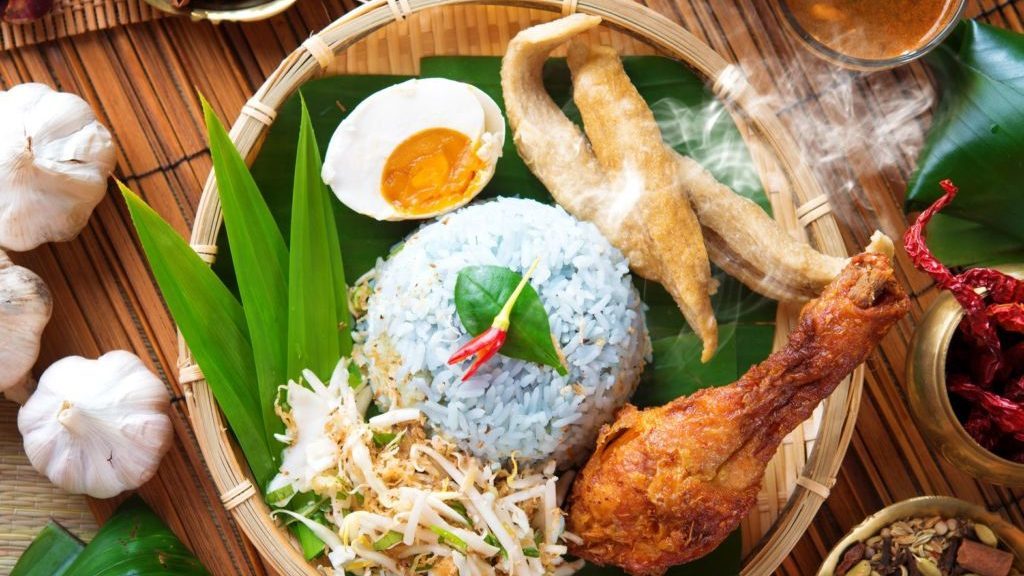Nasi Kerabu is a very popular dish in Kelantan and Terengganu, due to its popularity, it can now be found throughout all of Malaysia. Its rice has a unique blue colour which gives a subtle fragrance and is topped with various fresh vegetables. It is a healthy, attractive and delicious dish.
What is Nasi Kerabu?
Nasi Kerabu is a Malay phrase, where Nasi means rice and Kerabu is a Malay word referencing the Thai-style salad usually eaten raw. The blue-coloured rice is usually eaten with fish, chicken, meat, or salted egg and accompanied by various raw vegetables and condiments. Some variations of the rice dish serve it with solok lada (green chilli stuffed with grated coconut and flaked fish) and fried crackers.
History of Nasi Kerabu
Nasi Kerabu is said to have originated from Kelantan in the 15th century. It is among the traditional foods of Kelantanese Peranakans, a mixture of Chinese and Malay culture due to the migration of Chinese traders.
Besides that, the Kelantanese Peranakans dish also has some influences from Thailand due to the intermarriage between Hokkien men and women of Thai origin who were living in Kelantan at the time. Thus, it’s not surprising that a similar rice dish exists in Southern Thailand known as khao jam or khao yum. However, it differs from Nasi Kerabu in the condiments, flavour, and colour of the rice.
Exploring Nasi Kerabu Ingredients
A complete Nasi Kerabu is a complex dish involving various elements from the rice, herb salads, side dishes, and condiments. The dish is made from basic ingredients but other additions to the dish is dependent on consumers’ preference. All the elements are usually made separately and then assembled on a plate for serving.
Initially, the rice is soaked and cooked with the extract of purplish-blue Bunga Telang (butterfly pea flower), which gives the rice its attractive blue colour and unique fragrance. However, some places find that it is more convenient to just add a few drops of artificial colouring.
The herb salad is a combination of finely-shredded fresh raw vegetables, or edible leaves such as bean sprouts, long beans, cabbages, cucumber slices, daun kesum (Vietnamese mint), and daun kadok (betel leaf). The aromatic herbs are very fragrant and appetising.
Nasi Kerabu can be served with salted fish, salted egg, grilled meat, or fried chicken depending on the regions. The common condiments used are budu, which is the Kelantan iconic fermented fish sauce and kerisik ikan (coconut fish flakes). The budu is usually added to the spiced sauce to balance out the saltiness and spiciness.
On the other hand, some places prefer to use belacan (shrimp paste) instead of budu. Some version also include fish crackers at the side to provide a crunchy texture to the dish. Nasi Kerabu usually has a fishy taste that comes from budu, coconut fish flakes, and salted fish thus having Nasi Kerabu with beef or chicken can help reduce the fishy taste.
Where to find Nasi Kerabu in Malaysia
Although Nasi Kerabu originated from Kelantan, now it is easily available from street-hawkers or Malay restaurants. You can find Nasi Kerabu Kak Dah Hutan Kampung (Sungai Petani) on the Northern side of Peninsula Malaysia to Restoran Puyuk Besar (Johor Bahru) on the Southern end.
Find more Malay cuisine on foodpanda!
